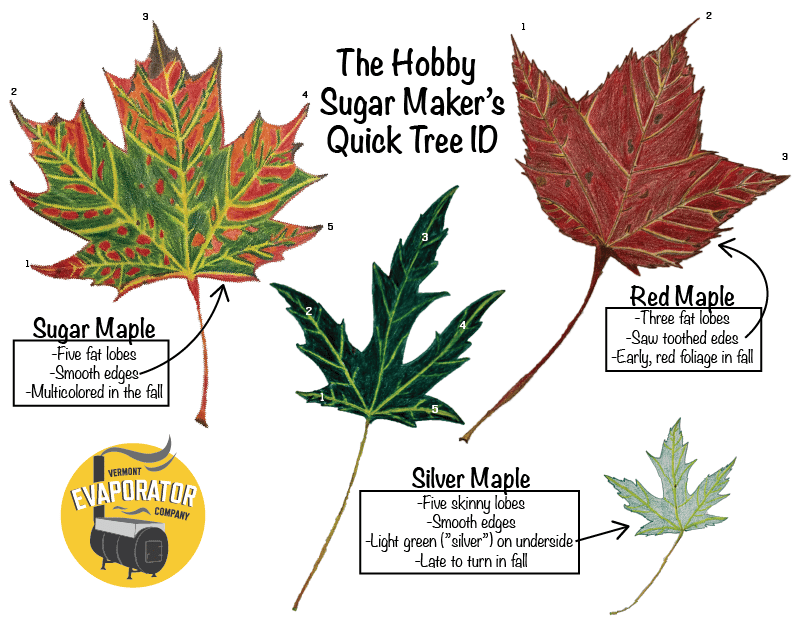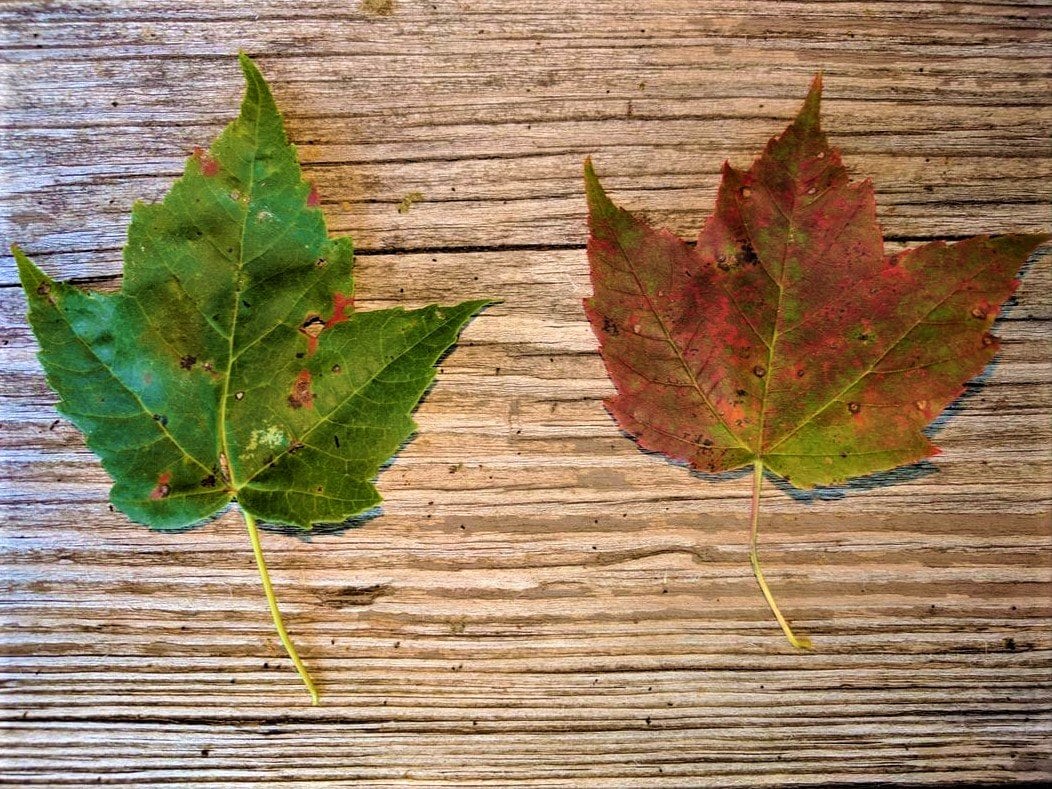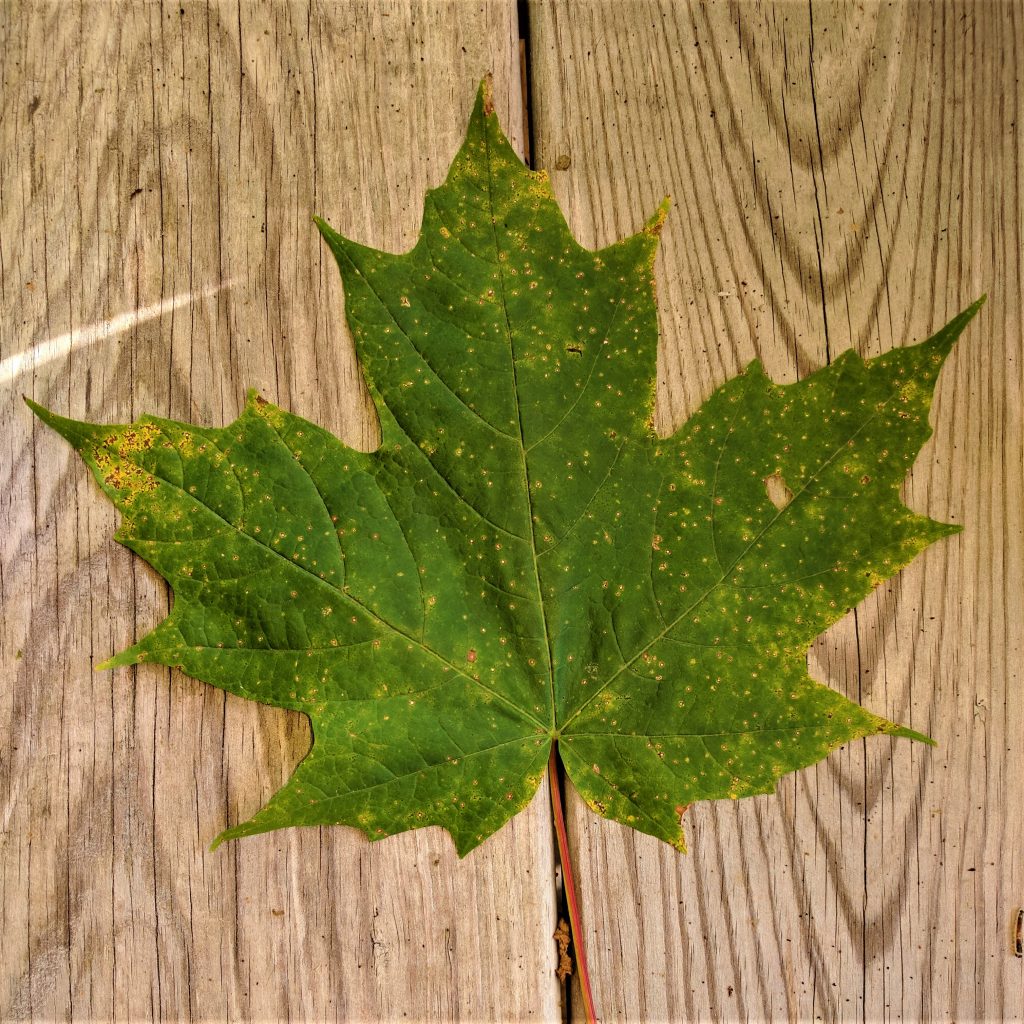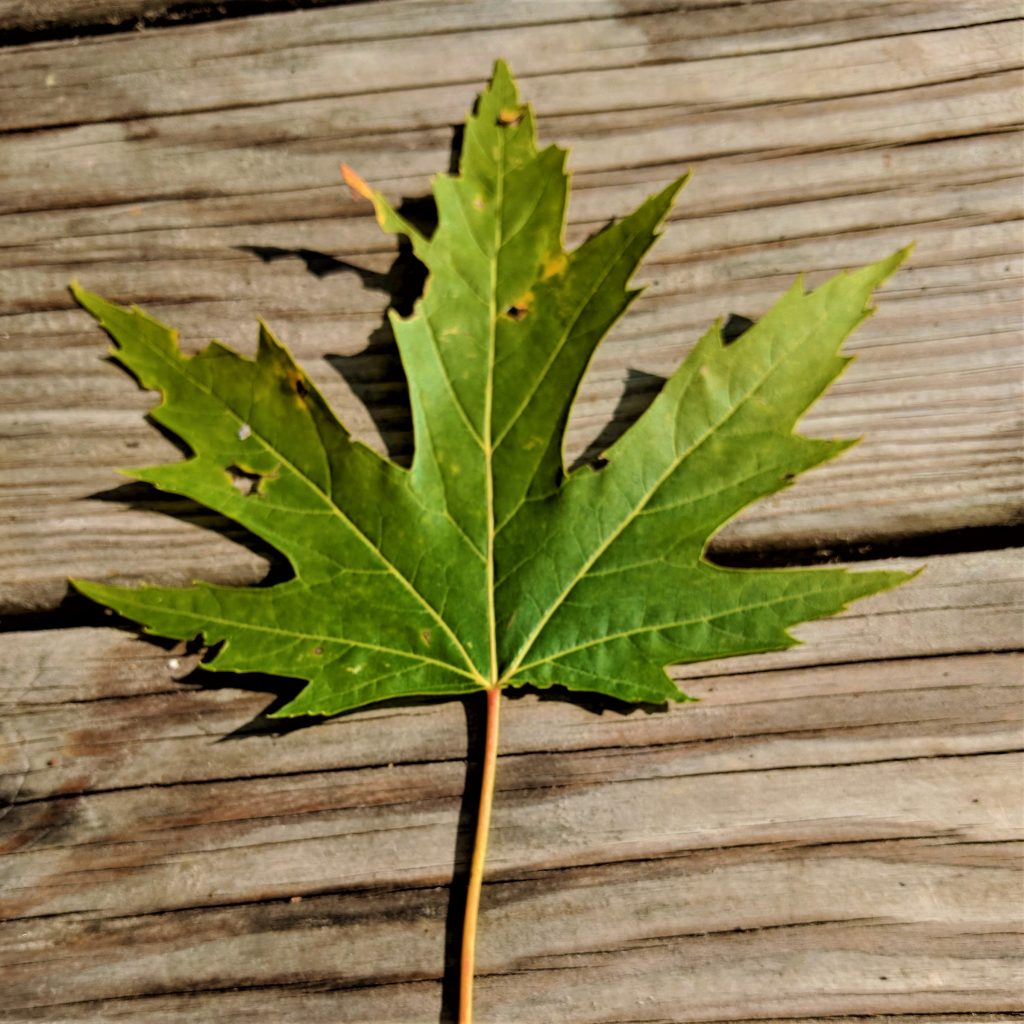Fall is just about here again. Time to escape into the woods. The leaves have started to turn, the air is crisp, and the world is letting out its annual sigh of relief. We can join it, if only for a minute, with a walk among the trees. Time to identify your maple trees!
Fall is a great time for you to make good on your goal of identifying some maples (or some more maples) for your DIY maple syrup-making operation.
Did you know? You can make maple syrup from any tree in the maple family that is 10 inches in diameter at chest height. So, grab a tape measure and some marking tape, and take a moment in the trees. You’ll be glad you did.
Red Maples
We make maple syrup with mostly red maples. The sugar content of the sap is lower than with sugar maples. That means it takes a bit more work to boil down to syrup, but the syrup tastes just the same. And reds are what we have near the house. So we use them.
Red maples are also called “swamp maples.” They live in swamps, bottomlands and uplands in moist soils. Red maples are hearty trees that grow to 50-70 feet tall. Presumably, red maples get their name either from the scarlet color they turn in the fall, the color of the winged seeds they produce in the springtime, or both.
The red maple leaf: three lobes, saw-tooth edges, turns red in fall.
The red maple leaf: three lobes, saw-tooth edges, turns red in fall.
Red maples will tolerate a wider range of conditions than the sugar maple, including variations in the climate. So, even for us amateur makers, it’s worth knowing your reds, even if you have plenty of sugars.
Science suggests they will fare well despite our warming climate. So, as it happens, for us, at least, there’s a little good news to take with the bad.
The leaves of a red maple are from 2 to 6 inches wide. They tend to look 3 lobed rather than 5 lobed (lobes are the sections of the leaf), although technical definitions allow for both. And they have a saw-toothed, jagged edge to them with not a smooth curve anywhere; that’s the giveaway for me.
Our sugarbush is very dense. Most of the leaves are far enough up in the air that I have to squint to see them. I was able to find leaves around the base of my reds as proof that I had squinted effectively.
The sugar maple leaf: five lobes, smooth edges, turns a variety of colors in fall.
Sugar Maples
And then there are the sugars. Sugar maples, so named because of the high concentration of sugar in their sap, grow even bigger than red maples, 60-80 feet, and naturally occur in rich, moist soils in uplands and valleys. In addition, however, sugar maples have been planted along roadways and at the edges of pasture lands for hundreds of years, and can still be found thus anywhere that farming is or ever was.
The leaf of a sugar maple is 3-5 inches wide and has 5 lobes, with a smooth, curved edge where the leaf of the red maple is jagged. (In the fall, sugar maples are likely to look multicolored, showing green as well as hints of yellow, orange, and/or red as their chlorophyll recedes.)
The few sugar maples we have are out in the open, and so have developed a crown that extends far enough toward the ground so that I don’t have to squint or forage for ground leaves to make my identification. The sugar maple is so iconic. It’s the Canadian flag! It’s as easy as that. Not convinced? Check out these other tips from experts on tree identification!
The silver maple leaf: five slender lobes, smooth edges, looks light green (or “silver”) on the underside.
Silver Maples
No reds or sugars? No problem! There are several other trees in the maple family that will do. Considered by some to be a subspecies of the sugar maple, the black maple produces sap that is similar in volume and sugar concentration to the sugar maple. Sap yields from silver maples are lower in volume and sugar concentration than the sugar maple but are still commonly tapped for backyard syrup making. Norway maples (invasive) and boxelders produce significantly less concentrated sap than the sugar maple but nevertheless can be (and are!) tapped to make syrup.
So if you’re thinking about sugaring next spring, don’t underestimate the value of taking a short stroll through your woods to map out your sugar stand, now. Before you know it, those leaves will be falling!
Be with the trees, everyone! And be well.




